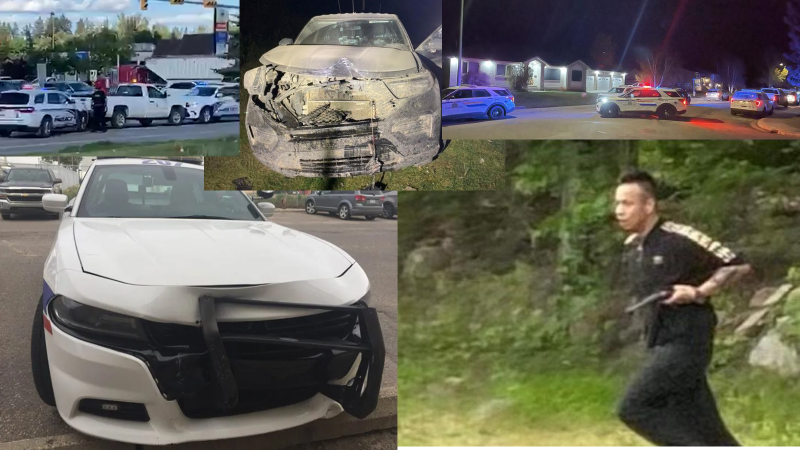
Sask police officers facing escalating assaults, violence
When RCMP officers in La Ronge pulled over a vehicle on the afternoon of June 19, 2022, they did so because it was speeding.
The car was an unremarkable older four-door sedan that turned into a nearby residential driveway after the officers turned on their lights and activated sirens.
Watchguard video from the cruiser showed nothing unusual until the driver got out and ran behind the house.
Then the passenger in the backseat got out holding a handgun, faced the officers in the vehicle and opened fire. Bullets (9 mm rounds designed to kill humans) hit the windshield, the radiator and the bumper. The shooter, Terrence Daigneault then ran and it was another three days before Saskatoon police found him and arrested him – but not without resistance once again.


